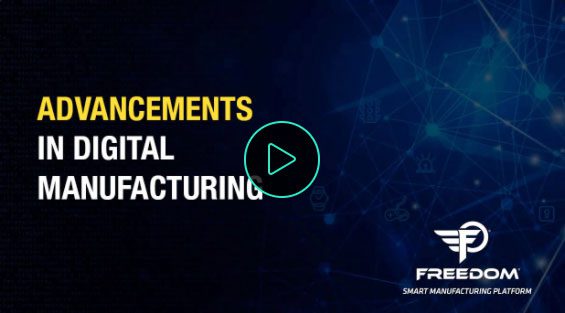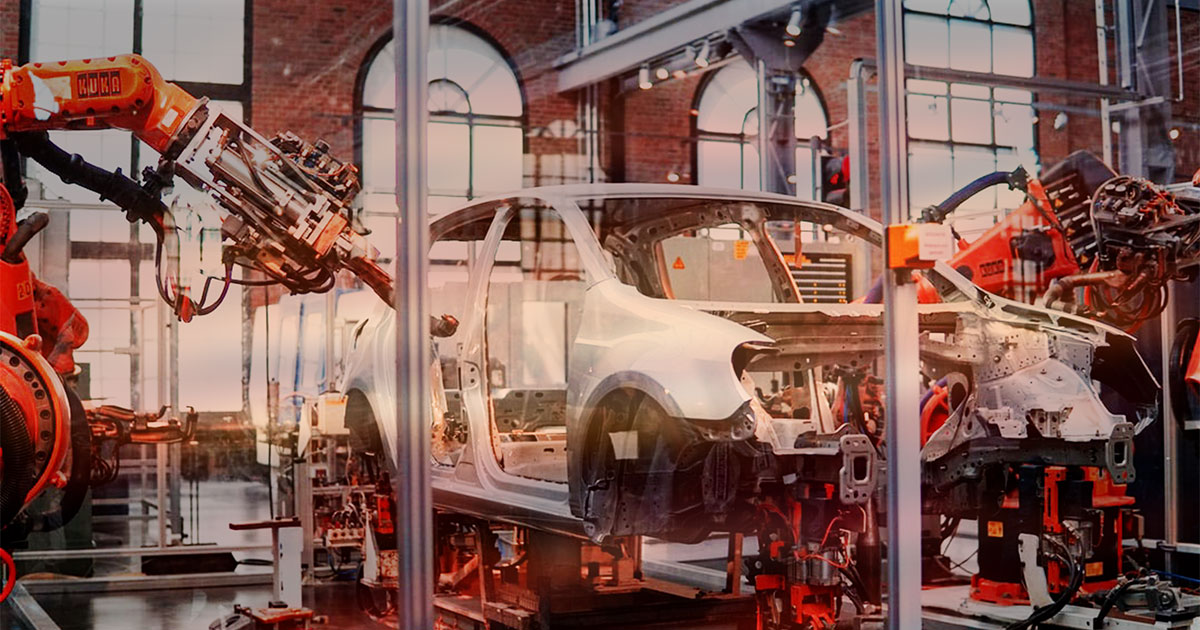How Has Manufacturing Changed?
As technology has changed at a rapid pace, so has manufacturing. Only twenty years ago, practically nothing had internet access. Now, it is hard to find something without internet access. A common way to explain how the manufacturing sector has changed is by referencing the steps of technological advancement that the manufacturing industry has taken. These are usually referred to as “Industry 1.0”, “Industry 2.0” and so on. We are currently in what is called Industry 4.0.
Industry 1.0 was known for utilizing mechanization and steam power and was very reliant on people for manufacturing. Industry 1.0 was estimated to start around the 1780’s.
Industry 2.0 was known for the start of mass production and the use of an assembly line and electricity. Industry 2.0 was very reliant on the workforce for creation of goods. This industrial revolution was estimated to start around 1870.
Industry 3.0 was the birth of automation with computers and electronics. The reliance on the workforce was diminished. This revolution was estimated to start around 1970.
Currently we are on the cutting edge of being in Industry 4.0 which is the inclusion of cyber-connected systems.
While some companies are getting larger, some are staying smaller and working in an “artisan” style. Both large and small companies can benefit from starting to take ahold of the technological advances. We are currently seeing a workforce shift from working in the manufacturing line, to working on the manufacturing line. As we are getting better with streamlining manufacturing, we are seeing the need for workers to tend the machines and automation more than being a part of the machine or process. We are finding that as companies get more efficient and agile with their raw material handling and workpiece processing, they are seeing an increase in production capacity for the same cost as before.
Manufacturing technology has come a long way in the last 50 years. The first 3D printer was made approximately 40 years ago and now we are seeing some companies solely relying on the process of additive manufacturing. As computers and technology alike keep evolving, the manufacturing sector must keep up to keep costs under control while improving speed to market.
Creating a Modern Manufacturing Workplace
Creating a modern manufacturing workplace sounds like a monumental task. When building the system on your own, it can be difficult but when you get the right people around you, it can be very simple. Many ask, “What skills are needed in modern manufacturing?”
One of the main skills needed is knowledge in interconnection. The manufacturing industry includes many companies doing many things. Even in one factory you have many different companies supplying product, from the machines, the automation, the building IT infrastructure, the computers, to an industrial vending machine. Knowing how everything is connected in a plant will help tremendously in making a manufacturing facility run better. Where the innovation in this space lies is within connecting manufacturing assets as smoothly as possible.
The manufacturing industry thrives on progression, as can be seen from the transformation from industry 1.0 all the way to 4.0. You can see how the DNA of the manufacturing sector has evolved with advancement of the technology employed. Being on the cusp of another industrial revolution means that you must have the willingness to change and adapt the plan that your factory is following.
The National Institute of Standards and Technology (NIST) outlined some technologies that are assisting in this progression.
The first technology that they outline is additive manufacturing or 3-D printing. This can start to shake up the manufacturing sector, due to a shift in the supply chain. 3-D printing is an amazing technology that helps save a lot of money for companies, since they do not have to tool a new machine but instead can prototype parts in hours instead of weeks.
The next technology NIST outlined was the use of advanced materials. As we start noticing a shortage of some materials and learning about volatility in material shipment, advanced materials are becoming more common. Advanced materials also provide strength and weight reductions so there are many benefits to making a shift to them.
The third technology outlined was the use of cloud computing. As the manufacturing sector makes a shift to being “smarter”, the use of computing is more prevalent. Many times, a company does not want to have their own IT staff to maintain a server and administrate software, so the option of cloud computing becomes more popular. Cloud computing is also popular due to enhanced security and the ease of off-site access to the system since it is not confined to your own facility.
The fourth technology that is outlined is the Internet of Things or IoT. While before the 2000’s there were “smart” things, now we are able to get more things connected on the network. This allows for things like notifications, activity tracking, and real-time calculations. You are now, in real-time, able to track your factory efficiency.
The fifth and final technology outlined is nanotechnology. Many are saying that nanotechnology is next biggest technology advancement. With nanotechnology you can create much more in a smaller package that can save energy, waste, and have more uses just due to the size alone.
Embracing the shift to Industry 4.0 is one of the most important things for transitioning to a modern manufacturing workplace, without that, it will be harder to make leaps and bounds in production efficiency and agility.
KPIs for the Modern Manufacturer
Key Performance Indicators, or KPIs are metrics that can be tracked during the manufacturing process. KPIs are not just for tracking the manufacturing process. KPIs can also be used in the office. Company culture is very important to foster and to keep track of, since it can have a significant impact on how well a company is performing. Encouraging an environment of interpersonal communication and teamwork is what creates a good working environment.
KPIs can be used in a factory setting itself. Each company must identify the performance indicators that they want to use. Many lean manufacturing metrics have been compiled for companies to start collecting so that they can achieve better operational success. The areas that need to be addressed are improving customer experience and responsiveness, improving quality, improving efficiency, reducing inventory, ensuring compliance, reducing maintenance, increasing flexibility and innovation, and reducing costs and increasing profitability.
A machine (asset) monitoring solution can automate the collection of such KPI’s. Instead of manually collecting data, performing off-line calculations and analysis, an asset monitoring solution like Freedom, allows you to let the machine interfaces and software do all of the work for you.
Choosing the Right Mobile Technologies for Modern Manufacturers
As technology has changed over the decades, computers are getting more powerful and smaller. While the first computers were the size of a room and were designed to only do numeric computations, computers now are small enough to fit in your pocket and powerful enough to do practically anything you need.
The difficulty now is not if the computer is powerful enough but finding the best application to match the needs of your operation. There are so many options these days for everything, the computers and servers used, the applications that are used for metrics tracking, and office applications. In some facilities, tablet-based solutions are the best option. If a company is trying to get more technologically advanced yet does not want cell phones on the shop floor, tablet-based solutions are great for speed and mobility. Many software programs like Power BI, Excel, SAP and others have mobile versions of their software. If software is web-based it typically is also available for use on mobile platforms.
There are also a lot of companies that make software for creating cross platform applications. Individually companies like Microsoft, Apple, and Google create Software Development Kits or SDKs for the use of developers to create their own apps. The way to choose the best solution for you depends on how you want to interface with the software. If you are interfacing with just one type of device, for example a Windows computer, you would just need an app that is compatible with Windows. As a mobility option, Android-based tablets are popular for interfacing with apps due to the low cost for the hardware and open-source support. Mobile app development, while not necessarily the easiest thing to do on your own, is very manageable by contracting a firm to create the app for you.
While some companies are trying to limit use of phones/tablets on the floor, others see great benefit and encourage it by using it properly. With proper IT support and policy, it is possible to limit access to certain apps or sites. The way that these companies view such devices is not as a distraction but as a tool. These tools are quickly accessible and very familiar to many people. App based systems are reliable, quick to use, optimized for the devices, and are typically secure.
Many times, a company will invest in software like Freedom to collect machine process and health data and display the resulting KPI’s on Real-Time Dashboards on tablets, large LED displays in the shop or on PC’s in the office. If you are not able to view these quickly and efficiently, the system is not being used to its full potential. The benefit of mobile apps and using this technology is being able to view whatever the software is telling you while on foot moving around. You can be on the shop floor and know what machines are down and what is wrong with them in real-time, you can see how a specific machine is performing and give operators suggestions to get the most out of them.
Mobile devices and software solutions are part of the next big change in the advancement of production technology. Companies should utilize these technologies and tools so that they can get the most out of their machines, systems, and workforce.
For more information about the Freedom Smart Manufacturing Platform, contact Sam Bowman at 513-719-1617 and info@freedomiot.com
[sc name=”ebook-deal”]





